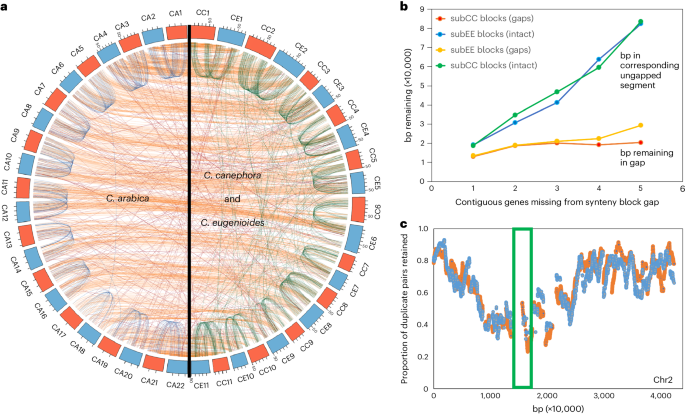2024-04-15 バッファロー大学(UB)
<関連情報>
- https://www.buffalo.edu/news/releases/2024/01/newly-sequenced-genome-reveals-coffees-prehistoric-origin-story.html
- https://www.nature.com/articles/s41588-024-01695-w
アラビカ種のゲノムと集団ゲノムから、現代コーヒー品種の多様化の歴史が明らかになった The genome and population genomics of allopolyploid Coffea arabica reveal the diversification history of modern coffee cultivars
Jarkko Salojärv,Aditi Rambani,Zhe Yu,Romain Guyot,Susan Strickler,Maud Lepelley,Cui Wang,Sitaram Rajaraman,Pasi Rastas,Chunfang Zheng,Daniella Santos Muñoz,João Meidanis,Alexandre Rossi Paschoal,Yves Bawin,Trevor J. Krabbenhoft,Zhen Qin Wang,Steven J. Fleck,Rudy Aussel,Laurence Bellanger,Aline Charpagne,Coralie Fournier,Mohamed Kassam,Gregory Lefebvre,Sylviane Métairon,… Patrick Descombes
Nature Genetics Published:15 April 2024
DOI:https://doi.org/10.1038/s41588-024-01695-w

Abstract
Coffea arabica, an allotetraploid hybrid of Coffea eugenioides and Coffea canephora, is the source of approximately 60% of coffee products worldwide, and its cultivated accessions have undergone several population bottlenecks. We present chromosome-level assemblies of a di-haploid C. arabica accession and modern representatives of its diploid progenitors, C. eugenioides and C. canephora. The three species exhibit largely conserved genome structures between diploid parents and descendant subgenomes, with no obvious global subgenome dominance. We find evidence for a founding polyploidy event 350,000–610,000 years ago, followed by several pre-domestication bottlenecks, resulting in narrow genetic variation. A split between wild accessions and cultivar progenitors occurred ~30.5 thousand years ago, followed by a period of migration between the two populations. Analysis of modern varieties, including lines historically introgressed with C. canephora, highlights their breeding histories and loci that may contribute to pathogen resistance, laying the groundwork for future genomics-based breeding of C. arabica.


